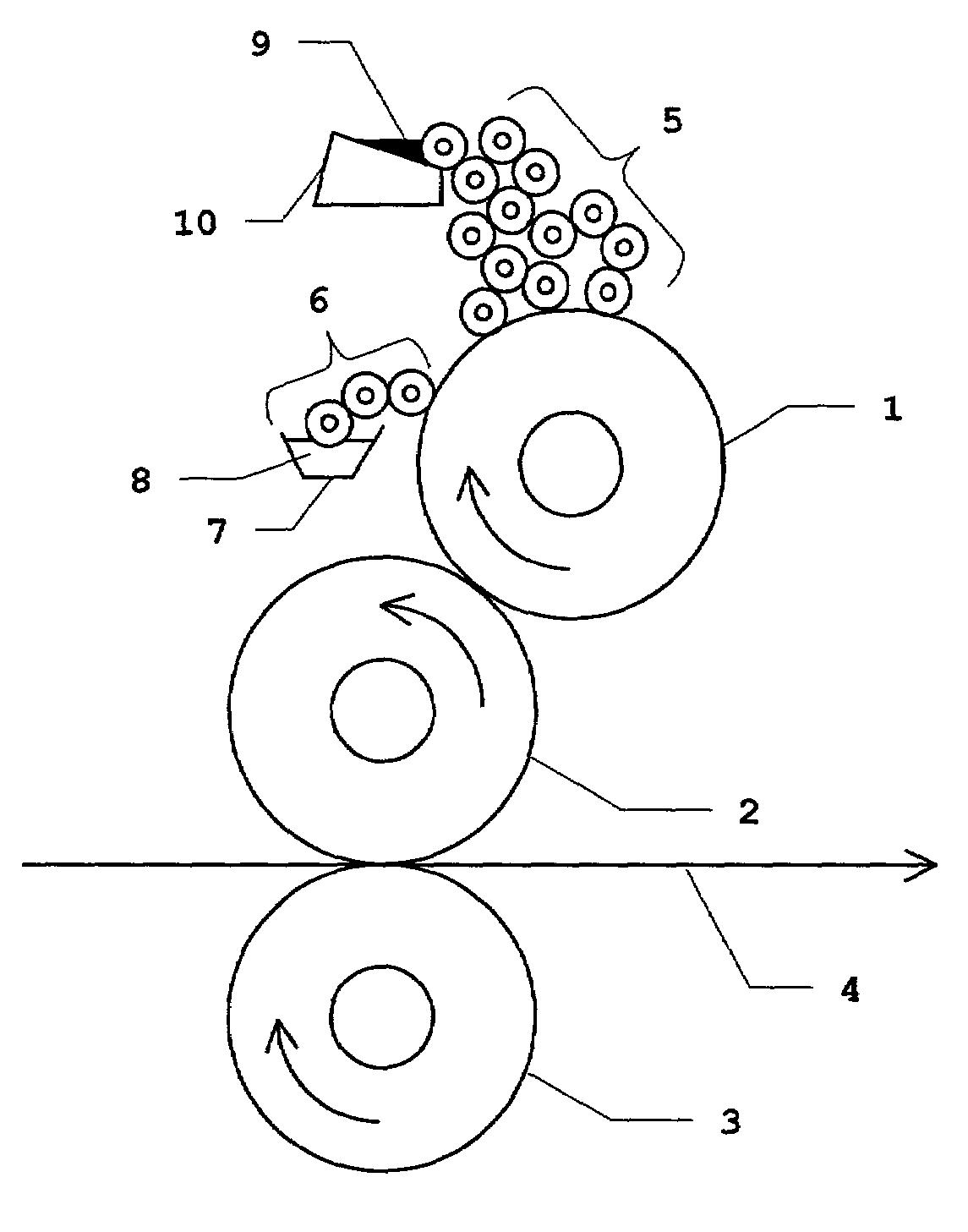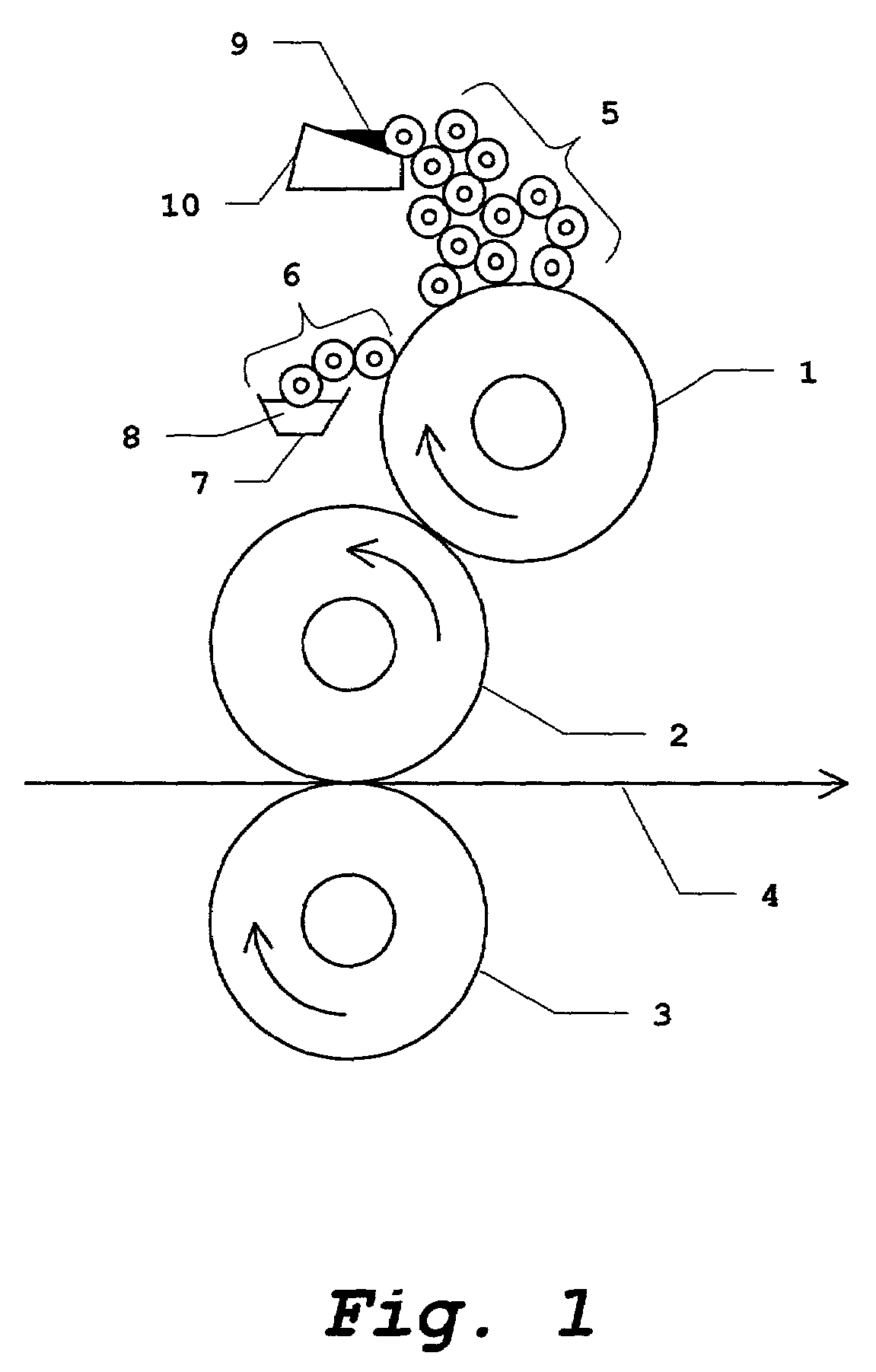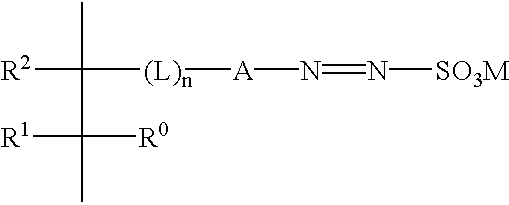Method of lithographic printing without dampening liquid
a technology of lithographic printing and dampening liquid, which is applied in the field of lithographic printing, can solve the problems of difficult to remove debris, low plate run length, and less suitable for on-press processing as required, and achieve the effect of preventing the adsorption of ink components
- Summary
- Abstract
- Description
- Claims
- Application Information
AI Technical Summary
Benefits of technology
Problems solved by technology
Method used
Image
Examples
examples
Preparation of a Heatset Single-Fluid Ink
1. Preparation of a Vinyl Varnish
[0089]An amount of 44.19 parts by weight of Ketrul 220 (a petroleum middle distillate fraction available from Total Petroleum, Inc.) is charged to a glass reactor equipped with stirrer, nitrogen inlet, total reflux condenser, and monomer inlet. The solvent is heated to 160° C. with stirring under a blanket of nitrogen. A monomer mixture of 36.01 parts by weight styrene, 12.27 parts by weight stearyl methacrylate, 2.62 parts by weight divinylbenzene, 1.89 parts by weight methacrylic acid, and 2.79 parts by weight t-butyl peroxy isopropyl carbonate (75% solution in mineral spirits) is added to the reactor over a period of three hours. After the monomer addition is complete, 0.23 parts by weight of t-butyl peroxy isopropyl carbonate is added over a period of fifteen minutes. The temperature is held at 160° C. for an additional two hours to allow for complete conversion of the monomer to polymer.
[0090]The measured...
PUM
| Property | Measurement | Unit |
|---|---|---|
| Acidity | aaaaa | aaaaa |
| Hydrophilicity | aaaaa | aaaaa |
Abstract
Description
Claims
Application Information
 Login to View More
Login to View More - R&D
- Intellectual Property
- Life Sciences
- Materials
- Tech Scout
- Unparalleled Data Quality
- Higher Quality Content
- 60% Fewer Hallucinations
Browse by: Latest US Patents, China's latest patents, Technical Efficacy Thesaurus, Application Domain, Technology Topic, Popular Technical Reports.
© 2025 PatSnap. All rights reserved.Legal|Privacy policy|Modern Slavery Act Transparency Statement|Sitemap|About US| Contact US: help@patsnap.com



